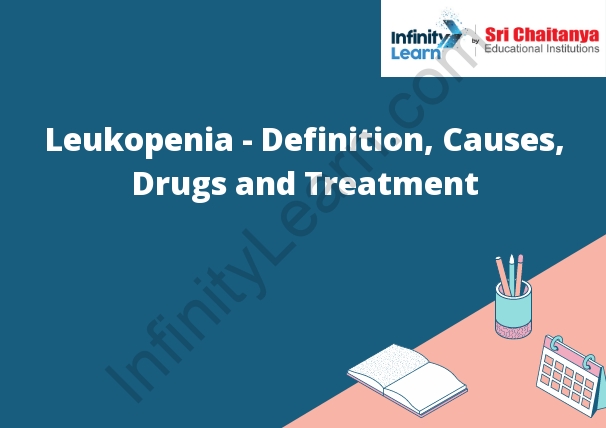Table of Contents
Leukopenia Definition
Leukopenia is a decrease in the number of white blood cells in the blood. Causes Leukopenia can be caused by a number of things, including:
- Infections
- Autoimmune diseases
- Chemotherapy
- Radiation therapy
- Bone marrow disorders
- Severe stress
- Certain medications
- Alcoholism
- Smoking
Malnutrition Symptoms Leukopenia may cause:
- Fever
- Chills
- Aches
- Fatigue
- Shortness of breath
- Chest pain
- Cough
- Diarrhea
- Blood in the stool
- Nosebleeds
- Bleeding gums
- Swollen glands
Rash Treatment Treatment for leukopenia depends on the underlying cause. If the cause is a medication or alcohol, the person may need to stop taking the medication or stop drinking alcohol. If the cause is a bone marrow disorder, the person may need to undergo treatment for the disorder. If the cause is a virus or infection, the person may need to take antibiotics or other medications to treat the infection.

About Leukopenia
Leukopenia is a condition that results in a decrease in the number of white blood cells in the blood. This can lead to an increased risk of infection, since white blood cells are important for fighting infection. Causes of leukopenia can include viral infections, autoimmune disorders, and cancer. Treatment depends on the underlying cause and may include antibiotics, antivirals, or chemotherapy.
Leukopenia Causes
Leukopenia is a medical condition that occurs when the number of white blood cells in the blood falls below the normal range. White blood cells are important for the body’s immune system, so leukopenia can leave a person susceptible to infection.
There are several causes of leukopenia, including:
- Infection
- Drugs or radiation therapy
- Aplastic anemia
- Bone marrow disorders
- Leukemia
Drugs
- drugs are chemicals that change the way a person’s body works. Some drugs can make people feel good, while others can make people feel bad. Some drugs can be used to help people feel better, while others can be used to harm people.
- Drugs are chemical substances that interact with living systems. They can be used for medical purposes, such as pain relief, or for recreational purposes, such as getting high. Drug abuse is the use of drugs in a way that is harmful to the user or others.
- There are many different types of drugs, and they can be classified in many different ways. Some of the most common ways to classify drugs are by their effects on the body, by the type of drug, and by the way they are used.
- Some drugs, such as marijuana and cocaine, are classified as recreational drugs because they are used for the purpose of getting high. Other drugs, such as heroin and methamphetamine, are classified as illegal drugs because they are addictive and can be harmful to the user.
- Drugs can be taken in many different ways. Some drugs are smoked, such as marijuana and cocaine. Others are injected, such as heroin and methamphetamine. Some drugs are taken orally, such as prescription medications.
- The effects of drugs can vary depending on the drug, the dosage, and the way it is used. Some drugs can cause euphoria, or a feeling of happiness and well-being. Other drugs can cause hallucinations, or a distortion of reality. Some drugs can cause physical dependence, or a need for the drug to maintain normal function. Other drugs can cause psychological dependence, or a need for the drug to avoid negative emotions.
- Drug abuse is a serious problem in the United States. More than 23 million people, or 9 percent of the population, are addicted to drugs. Drug abuse can lead to many negative consequences, such as criminal activity, job loss, and health problems.
- Drug abuse is a problem that can be addressed through prevention and treatment. Prevention programs can teach people about the dangers of drug abuse and how to avoid it. Treatment programs can help people overcome their addiction and get their life back on track.







